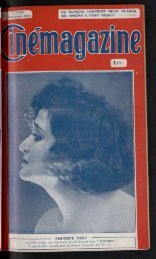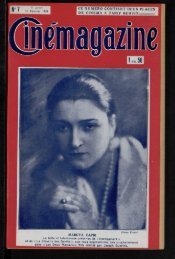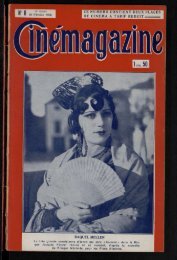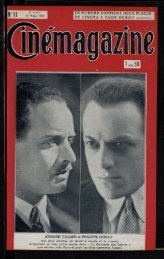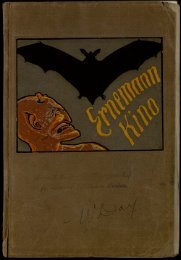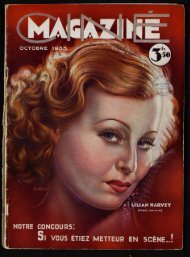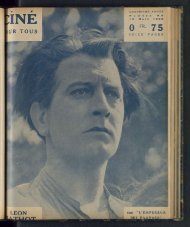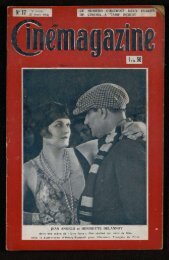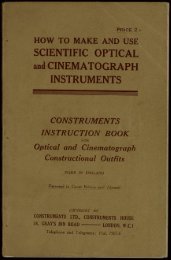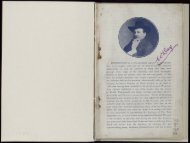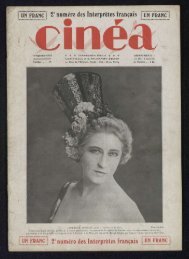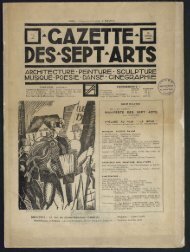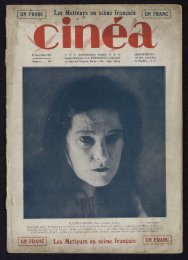Untitled
Untitled
Untitled
Create successful ePaper yourself
Turn your PDF publications into a flip-book with our unique Google optimized e-Paper software.
96 MODERN MAGIC LANTERNS.<br />
Geometrical designs, butterflies, etc., are built up of pieces<br />
of the substance in question, mounted up as slides, and<br />
are obtainable through the dealers. A more satisfactory<br />
method with many people will be to make them themselves,<br />
the operation not being a very difficult one,<br />
consisting, as it does, in a building up of the design on<br />
a glass slide with pieces of mica cemented together with<br />
Canada balsam. Crystallised benzoic acid, salicine, etc.,<br />
also give very beautiful projected images with polari3ed<br />
light.<br />
Slabs of glass held in a clamp in such a way that, while<br />
the image of the glass is on the screen, stress can be set up<br />
with the glass by means of a screw, exhibit in a very clear<br />
manner the changes set up by the stress which the polariscope<br />
revealschanges which in no other way can be<br />
rendered visible.<br />
Anderton's stereoscopic lantern, introduced about two<br />
years ago, is an example of an ingenious application of<br />
polarised light, with a view to enabling an audience to see<br />
the image on the screen stereoscopically or in relief. In<br />
order to effect this it is essential that two distinct images<br />
shall be seen by the two eyes, the two slides for the purpose<br />
being made from two negatives taken from different standpoints,<br />
side by side, so that one differs from the other by<br />
seeing a little more round one side or the other of the object.<br />
The two slides, which in all other respects are identical, are<br />
shown simultaneously upon a screen, the surface of which<br />
is composed of metallic foil, by means of a biunial lantern.<br />
After leaving the objective, the light from each of these<br />
lanterns passes through a polariser, these polarisers in the<br />
two lanterns being so arranged that the planes of polarisation<br />
are at right angles to one another. Each observer is<br />
provided with a little pair of analysers mounted like operaglasses,<br />
but in each of which the analysers are arranged<br />
with reference to each other as are the polarisers in the<br />
lanterns, the effect of which is that only one of the blended<br />
pictures on the screen is seen with one eye, and the other<br />
picture with the other eye. The result, on viewing the two<br />
images on the screen through such an apparatus, is to<br />
eliminate from the field of view of one eye the picture from<br />
THE LANTERNSPECTROSCOPE, POLARISCOPE, ETC. 97<br />
one lantern, and from the other eye that from the other ; the<br />
brain combining the two pictures so as to give the impression<br />
of the objects standing out in relief, as in nature.<br />
All optical lanterns are virtually lantern microscopes, as a<br />
moment's consideration will make clear. The slide, whatever<br />
it may be, is the object, an enlarged image of which is<br />
projected upon the screen. Hence there are many things<br />
which, needing only a small degree of magnification to<br />
render their details plain, can be exhibited without the aid<br />
of any further apparatus whatever. The writer had an<br />
Eg.<br />
MICROSCOPE FOR TABLE<br />
LANTERN USE.<br />
AND<br />
opportunity a little time since<br />
of looking over a large number<br />
of what appeared at first sight<br />
to be very carefully drawn and<br />
beautifully coloured lantern<br />
slides of sections of various<br />
animal tissues, healthy and<br />
diseased, interesting more especially<br />
to veterinary surgeons.<br />
These turned out, on more careful<br />
examination, to be the actual<br />
preparations themselves, the<br />
vessels of which had been injected with various colouring<br />
matters, the whole tissues stained to show as far as possible<br />
their structure, and then mounted up as slides ; and very<br />
beautiful they were, while their value for educational purposes<br />
was almost immeasurable. Such slides in the lantern were<br />
magnified thirty or forty diameters without difficulty.<br />
This is the simplest form of lantern microscope, but it is<br />
of course limited in its powers, and for greater magnifical



